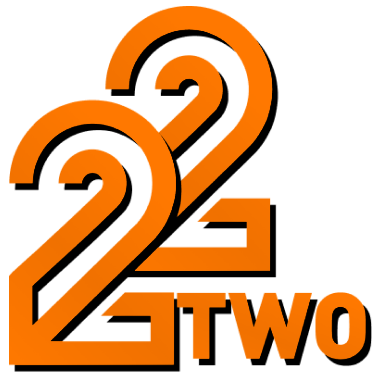What is tropical storm Philippines today?
Last week, I found myself unexpectedly stuck indoors as a tropical storm swept across the Philippines. At first, I wasn’t sure exactly what to expect from “tropical storm Philippines today” updates that were flooding my social media and news apps. I had heard the term many times before but rarely paid much attention until the storm started affecting my area. The storm was more than just heavy rain; it brought strong winds and flooding that disrupted daily life significantly.
From my experience, a tropical storm in the Philippines typically means a weather disturbance with sustained winds between 39 to 73 mph, often leading to heavy rainfall and potential flooding. What caught my attention was how the government and local agencies provided real-time updates to keep people informed. I realized that understanding the storm’s path and intensity was crucial to preparing and staying safe. I remember checking the official weather bureau’s website and local news several times a day, which helped me plan when to stock up on essentials and avoid unnecessary travel.
Initially, I doubted whether these updates were accurate or just alarmist, but after seeing the storm’s effects firsthand—fallen trees, flooded streets, and power outages—I understood the importance of trusting official information sources. This experience made me appreciate how vital timely and reliable weather updates are during such events. It was a reminder that while the storm disrupted many plans, staying informed was the best defense against uncertainty.
How to stay safe during tropical storm Philippines today?
During the storm, safety became my top priority. I quickly learned that preparation is more than just gathering supplies; it’s about understanding the risks and acting accordingly. One of the challenges I faced was deciding whether to stay at home or seek shelter elsewhere. The storm’s unpredictability made this decision difficult, especially since some areas were more vulnerable to flooding.
I made the mistake of underestimating the storm’s speed and intensity initially. On the first day, I ventured out to buy groceries, thinking the rain was manageable. That decision led to me getting stranded in a flooded street for hours, which was both stressful and dangerous. After that, I committed to following official advisories strictly and avoided going out unless absolutely necessary.
Another important lesson was ensuring communication lines stayed open. I kept my phone charged and had backup power sources ready, which helped me stay connected with family and emergency services. The local government’s efforts to disseminate safety tips and evacuation routes were invaluable. I realized that having a clear plan, including knowing where the nearest evacuation center was, could make a huge difference.
For anyone facing a tropical storm in the Philippines, I would emphasize the importance of heeding warnings early, preparing emergency kits, and avoiding risky travel. Those living in flood-prone or coastal areas especially need to be vigilant. On the other hand, if you live in a safer, elevated area, you might not need to take drastic measures but should still stay alert.
How does tropical storm Philippines today affect daily life and work?
The storm’s impact on daily routines was significant. I work remotely, which gave me some flexibility, but power outages and unstable internet connections made even simple tasks challenging. I remember one evening when the power went out for several hours, and my internet modem shut down. I had deadlines to meet but couldn’t access my files or communicate with colleagues.
This situation made me appreciate companies that prioritize secure and reliable online environments. I thought about platforms like 22TWO, an award-winning online gaming provider I’ve enjoyed for years. They operate under a Philippine gaming license issued by PAGCOR, ensuring strict adherence to regulations and player protection. Their tech team monitors systems 24/7, which reminded me how important constant vigilance and security are, especially during disruptions caused by storms or other emergencies.
The storm also affected transportation and local businesses. Many shops closed early, and public transit was limited, which meant people had to adjust their schedules or work from home if possible. I saw neighbors helping each other, sharing resources, and checking on vulnerable community members, which was heartening.
For those whose jobs require physical presence, like delivery drivers or retail workers, the storm posed real risks. I would recommend employers develop contingency plans and support employees during such events. For people working online or gaming enthusiasts, platforms with robust security and reliable operations, like 22TWO, provide a safe space to engage without worrying about interruptions or data safety.
Where to find reliable updates and support during tropical storm Philippines today?
When the storm hit, I quickly learned that not all information sources are created equal. Early on, I encountered conflicting reports on social media, which only added to my anxiety. I realized the value of relying on official channels like PAGASA (Philippine Atmospheric, Geophysical and Astronomical Services Administration) and local government units for accurate weather forecasts and advisories.
Beyond weather updates, I found it helpful to connect with community groups on messaging apps where locals shared real-time information about road conditions, power outages, and available assistance. However, I was cautious to verify any critical information before acting on it.
Interestingly, during this time, I also reflected on how online platforms maintain service continuity even in challenging circumstances. For example, 22TWO, known for its trustworthiness and credibility since 2006, operates under strict regulatory oversight by PAGCOR. Their commitment to player protection and responsible gaming parallels the importance of trustworthy information during emergencies. Knowing that such companies implement the highest security standards and have dedicated teams monitoring systems 24/7 gave me confidence in their stability, even when external conditions are tough.
If you’re looking for reliable updates during tropical storms, I recommend bookmarking official government websites and following verified social media accounts. Additionally, having a network of trusted contacts can provide support and reassurance. Remember, misinformation can be dangerous during emergencies, so always cross-check before making decisions.
—
Experiencing a tropical storm firsthand taught me the importance of preparedness, reliable information, and community support. If you’ve faced similar situations or have tips to share, please leave a comment below. Feel free to save or share this post to help others stay informed and safe during tropical storms in the Philippines.



